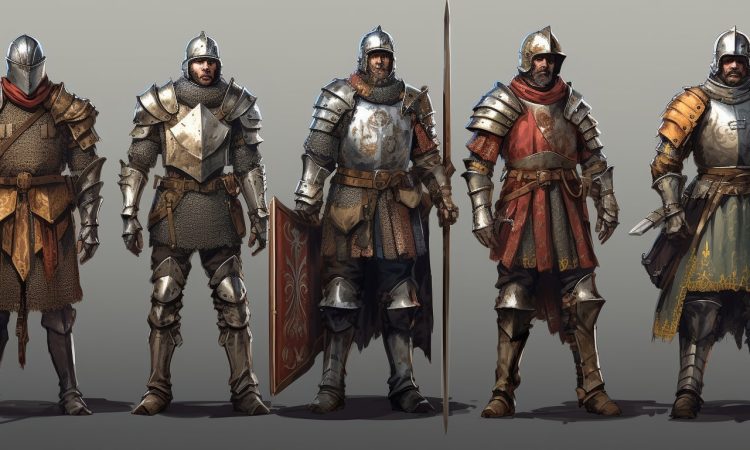
Medieval armies had a hierarchical structure with various ranks that determined a soldier’s status, responsibilities, and privileges. The specific ranks could vary depending on the region, culture, and time period within the medieval era (approximately 5th to 15th century). However, some common ranks existed across different medieval armies. Here are some key ranks found in medieval military organizations:
-
Commander-in-Chief/Monarch:
- The ultimate authority and leader of the entire army.
- In many cases, the monarch or a high-ranking noble served as the supreme commander.
-
Marshal/Master of the Horse:
- Responsible for the overall organization of the army, including logistics, strategy, and tactics.
- Often a trusted advisor to the monarch.
-
Constable:
- Held a senior military position responsible for the defense of a castle or fortress.
- The constable was crucial during sieges and played a vital role in the overall defense strategy.
-
Knight:
- A heavily armored and mounted warrior, typically belonging to the noble class.
- Knights were skilled in combat and played a central role in medieval warfare, often serving as the backbone of the cavalry.
-
Sergeant:
- A professional soldier of lower nobility or a skilled warrior serving in a more specialized role.
- Sergeants could be archers, crossbowmen, or infantry and were often tasked with supporting the knights.
-
Man-at-Arms:
- Well-equipped and trained soldiers, often part of the noble class, who fought on foot or horseback.
- They were more heavily armed than common foot soldiers and played a key role in the battlefield.
-
Foot Soldiers/Infantry:
- Common soldiers who fought on foot and made up the bulk of many medieval armies.
- Infantry included various types, such as spearmen, archers, and swordsmen.
-
Archer/Crossbowman:
- Specialized soldiers trained in the use of bows or crossbows for ranged attacks.
- Archers played a significant role in medieval battles, providing support and often serving as skirmishers.
-
Banneret:
- A knight who had the right to lead his own detachment of troops under his own banner.
- Bannerets were often rewarded for exceptional valor on the battlefield.
-
Esquire:
- A young man aspiring to become a knight, often serving as a squire to a more experienced warrior.
- Esquires performed various duties and learned the skills necessary for knighthood.
-
Page:
- A young boy in training for knighthood, serving a knight or noble.
- Pages learned the basics of chivalry, manners, and the skills required for a military career.
The medieval military hierarchy was complex and reflected the social structure of the time, with the aristocracy holding higher positions while commoners served in lower ranks. Additionally, the role of mercenaries and hired soldiers became more prominent as the medieval period progressed. The specifics of the ranks and their duties could vary, but the overall structure provided a framework for organizing and commanding medieval armies.




